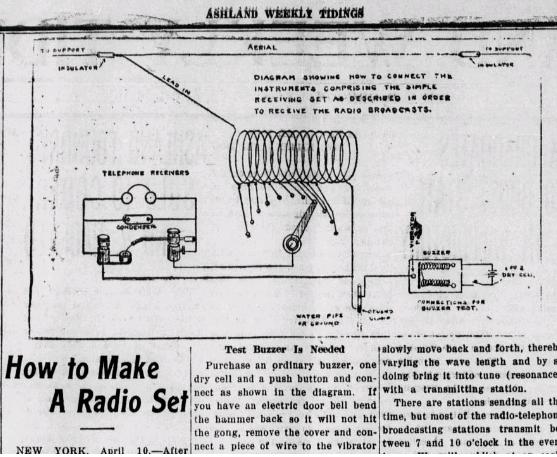On this day 92 years ago, The Ashland (Oregon) Weekly Tidings published these instructions for constructing a radio set. As you can see, it’s simply a crystal set. Also shown is a test buzzer, which it describes as being “in reality a miniature radio transmitting station” to test the detector and find the crystal’s sweet spot in the absence of an actual station.
This article bears the dateline of New York, and it’s undoubtedly a news service item that was published in many local papers. The issue also includes a list of broadcast stations in operation. None in Oregon is listed, but there are stations in Seattle, Spokane, Yakima, as well as Los Angeles. The test buzzer would probably be a necessity for the Oregon listener to ensure the radio was ready to pull in one of these distant stations at night.
In this listing, WLAG, the predecessor of WCCO, is not yet listed. Minneapolis is on the map with WLB, the station at the University of Minnesota and predecessor of KUOM.
In retrospect, both of my sets of grandparents were fairly early adopters of radio. My dad’s family had a radio, I’m guessing in the early 1930’s. And I believe this was before the farm was electrified, so this was probably a battery set. My maternal grandfather built an early crystal set, probably about this same time as these plans were published, or shortly thereafter. Unfortunately, I don’t have any details, nor is there any picture of this set. I’m told he took a class during which he built the radio. He knew the trick of placing the headphone in a crystal bowl, which would amplify the sound enough to allow multiple people to listen. Chances are, the sounds of WLB, or perhaps WLAG, were what the assembled group could hear.

